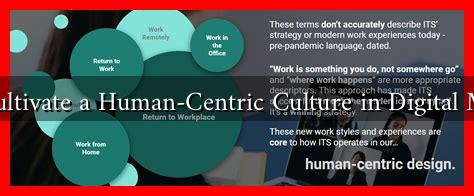-
Table of Contents
How to Cultivate a Human-Centric Culture in Digital Messaging
In an increasingly digital world, the way we communicate has evolved dramatically. Businesses are now leveraging digital messaging platforms to connect with customers, employees, and stakeholders. However, amidst the rapid technological advancements, it is crucial to maintain a human-centric culture in these interactions. A human-centric approach not only enhances relationships but also fosters trust and loyalty. This article explores effective strategies to cultivate a human-centric culture in digital messaging.
Understanding Human-Centric Culture
A human-centric culture prioritizes the needs, emotions, and experiences of individuals. In the context of digital messaging, this means creating interactions that are empathetic, personalized, and respectful. According to a study by Forbes, companies that adopt a human-centric approach see a 30% increase in employee engagement and a 20% increase in customer satisfaction.
Strategies for Cultivating a Human-Centric Culture
To foster a human-centric culture in digital messaging, organizations can implement several strategies:
- Empathy in Communication: Train employees to communicate with empathy. This involves understanding the emotions and perspectives of the recipient. For instance, using phrases like “I understand how you feel” can make a significant difference in customer interactions.
- Personalization: Utilize data analytics to personalize messages. Tailoring communication based on customer preferences and past interactions can enhance the user experience. For example, Netflix uses algorithms to recommend shows based on viewing history, making users feel valued.
- Active Listening: Encourage active listening in digital conversations. This means acknowledging messages, asking clarifying questions, and responding thoughtfully. Tools like chatbots can be programmed to recognize when to escalate issues to human agents for more nuanced conversations.
- Transparency: Be transparent in communications. Whether it’s about product changes, service disruptions, or company policies, honesty fosters trust. A case study of Buffer, a social media management platform, shows that their transparency about salaries and company performance has built a loyal customer base.
- Feedback Loops: Create channels for feedback. Regularly solicit input from customers and employees about their experiences with digital messaging. This not only shows that you value their opinions but also helps identify areas for improvement.
Leveraging Technology for Human-Centric Messaging
While technology can sometimes create barriers in communication, it can also enhance human-centric messaging when used thoughtfully. Here are some ways to leverage technology:
- AI and Chatbots: Implement AI-driven chatbots that can handle basic inquiries while ensuring a seamless transition to human agents for complex issues. This hybrid approach maintains efficiency while preserving the human touch.
- Video Messaging: Use video messages for more personal interactions. Platforms like Loom allow employees to send video messages, making communication more engaging and relatable.
- Collaboration Tools: Utilize collaboration tools like Slack or Microsoft Teams to foster a sense of community among remote teams. These platforms can facilitate informal interactions that mimic in-person conversations.
Case Studies of Successful Human-Centric Messaging
Several companies have successfully implemented human-centric messaging strategies:
- Zappos: Known for its exceptional customer service, Zappos empowers employees to go above and beyond in their interactions. Their representatives are encouraged to spend as much time as needed to resolve customer issues, creating a loyal customer base.
- Airbnb: Airbnb focuses on building community through its messaging. They encourage hosts to share personal stories and experiences, making the platform feel more human and relatable.
Conclusion
In conclusion, cultivating a human-centric culture in digital messaging is essential for building strong relationships with customers and employees. By prioritizing empathy, personalization, active listening, transparency, and feedback, organizations can create meaningful interactions that resonate with individuals. Leveraging technology thoughtfully can enhance these efforts, making communication more engaging and effective. As businesses continue to navigate the digital landscape, embracing a human-centric approach will not only differentiate them from competitors but also foster loyalty and trust in an increasingly automated world.


